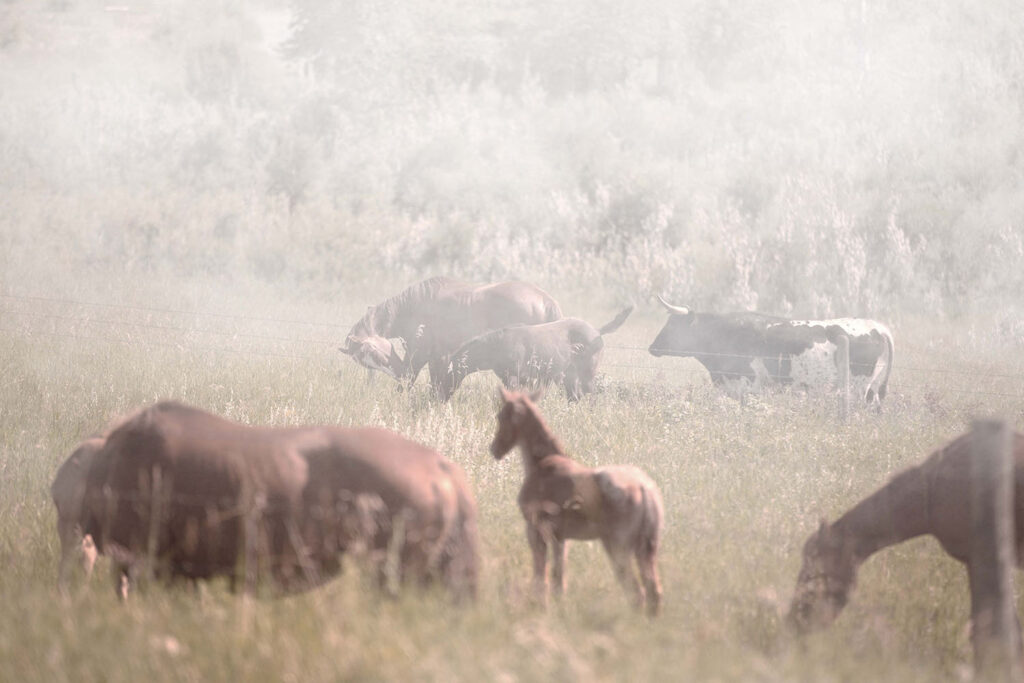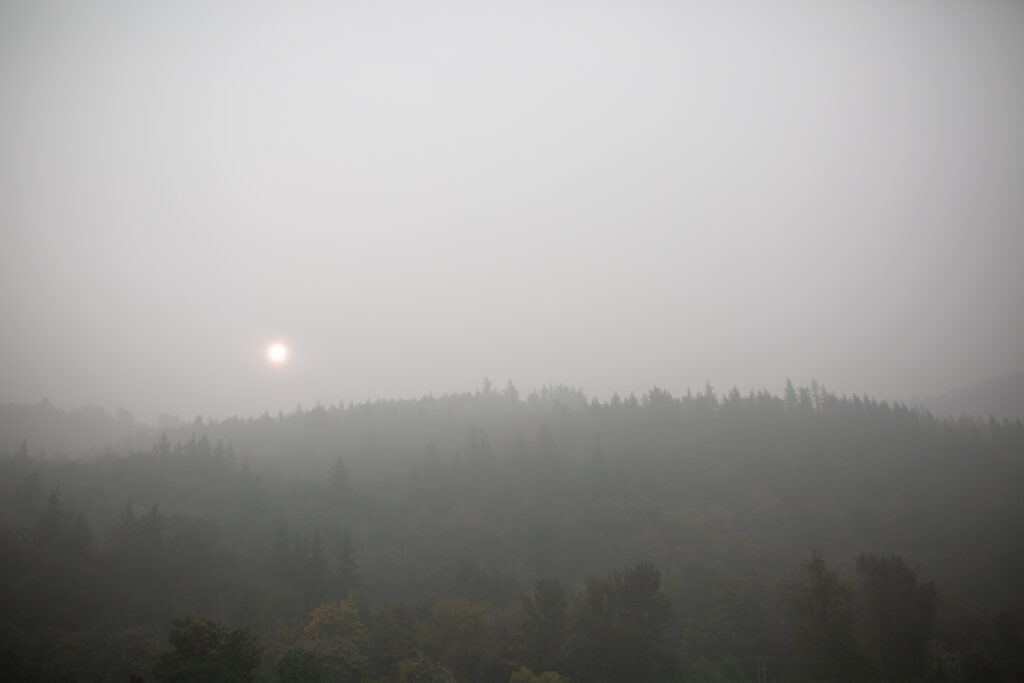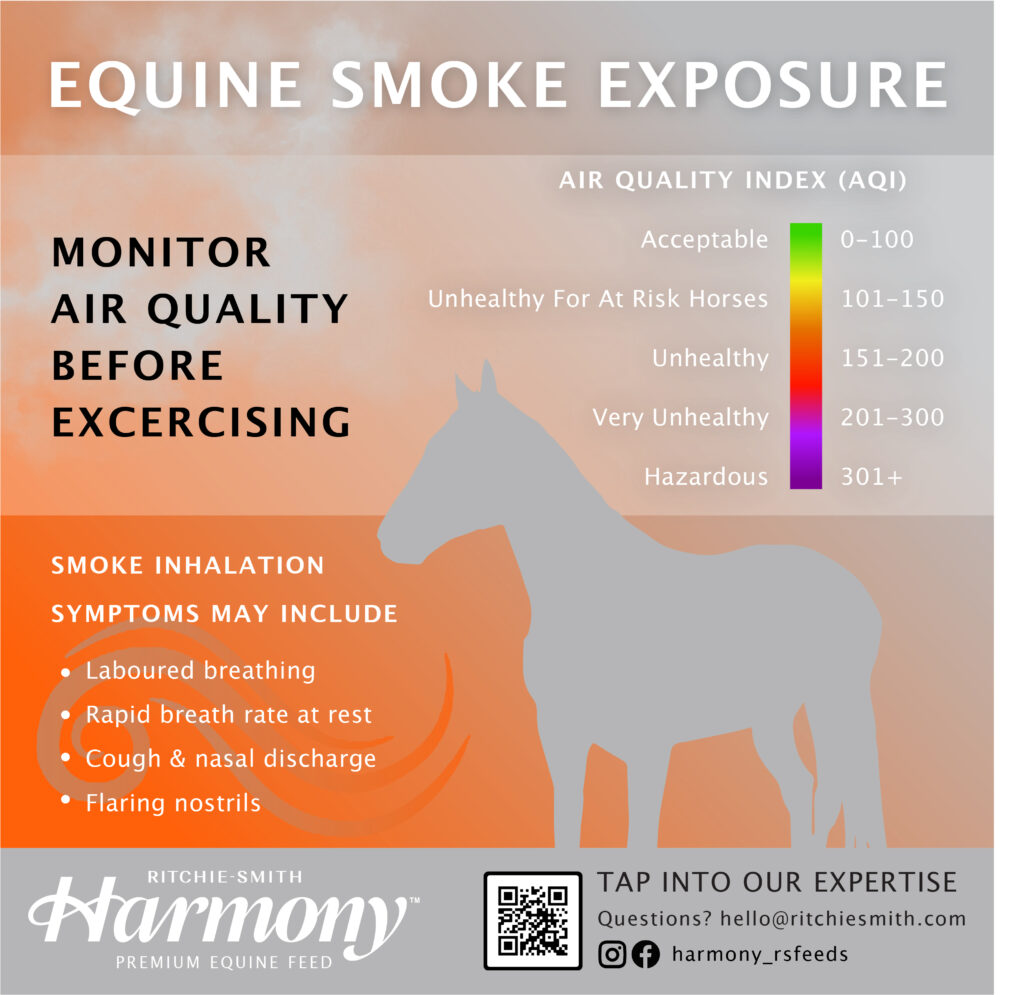
Article
Smoke Exposure & Your Farm
Keep a watchful eye on your animals if you’re in one of the many areas currently impacted by wildfires. Even the more distant communities can be greatly affected by windswept smoke and should monitor air quality closely.
Keep a watchful eye on your animals if you’re in one of the many areas currently impacted by wildfires. Even the more distant communities can be greatly affected by windswept smoke and should monitor air quality closely.
Why Is Smoke Dangerous?
Smoke is made up of various particulates and gases; including carbon dioxide, carbon monoxide, soot, and ash. These may be inhaled, making their way deep into the airway and lungs. Carbon monoxide (CO) exposure may prove fatal for humans and animals alike.
Protecting Your Animals from Smoke
While there’s often little that can be done to stop smoke from entering your barn, keeping your animals calm is your first line of defence. Ensure a steady supply of clean water close to their food source, as staying hydrated allows their body to flush particulates away more effectively.
Horses & Smoke Exposure
Due to their size, horses are at a higher risk of smoke inhalation and lung damage; their large lung capacity means they will draw in a greater number of particulates from the air.
While the average human at rest will pass 7-8 litres of air per minute through their lungs, a horses at rest will pass approximately 60 litres/minute. During strenuous exercise horses breath deeper, increasing the amount of air passing through their lungs exponentially, reaching a range of 1,500 – 2,000 litres per minute. Deeper breathing may draw particulates farther into the lungs and cause greater damage, so it’s important to check air quality conditions for your area before deciding if an exercise time is appropriate.
Ash can also settle onto your horse’s body and lead to skin irritation, so it’s important to wash your horse thoroughly after smoke exposure to reduce the chance of a reaction.

Understanding Air Quality Index (AQI)
When the AQI is consistently below 100, your horse can exercise as normal, but as the index rises activity levels should be adapted to prevent long term lung and airway damage.
Index Ranges:
- 0-100 Acceptable
- 101-150 Unhealthy for at risk individuals
- 151-200 Unhealthy
- 201-300 Very Unhealthy
- 301+ Hazardous
Learn more about these ranges HERE.
To check your local air quality using the US AQI click HERE.
Signs of Smoke Inhalation
Contact your vet if your horse appears to be in distress and is showing signs of smoke inhalation. Symptoms may range from mild to severe depending on the concentration of airborne particulates; prolonged exposure may result in permanent lung damage.
Symptoms of smoke inhalation in horses include: Difficulty breathing, rapid breath rate at rest, eye irritation, flaring nostrils, cough and nasal discharge; as well the potential aggravation of pre-existing respiratory conditions, such as heaves.
Reintroducing Exercise
After smoke exposure your horse needs time to recover before being expected to exercise as normally. Giving them a week of rest in clean air is an important first step, followed by a slow reintroduction of exercise intensity and duration over several weeks. Horses with poor fitness levels or pre-existing conditions will need an extended time to return to normal activities.


Have a Specific Question?
Our dedicated team of expert nutritionists are here to help. Send us your questions.
Ask Our Experts




 Premium Poultry Feed
Premium Poultry Feed
 Premium Equine Feed
Premium Equine Feed
